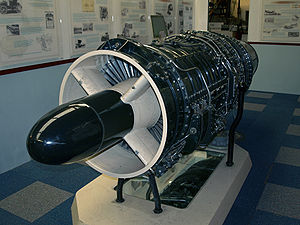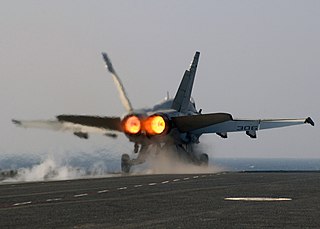
An afterburner is an additional combustion component used on some jet engines, mostly those on military supersonic aircraft. Its purpose is to increase thrust, usually for supersonic flight, takeoff, and combat. The afterburning process injects additional fuel into a combustor in the jet pipe behind the turbine, "reheating" the exhaust gas. Afterburning significantly increases thrust as an alternative to using a bigger engine with its attendant weight penalty, but at the cost of increased fuel consumption which limits its use to short periods. This aircraft application of "reheat" contrasts with the meaning and implementation of "reheat" applicable to gas turbines driving electrical generators and which reduces fuel consumption.

The Gloster Javelin is a twin-engined all-weather interceptor aircraft that served with Britain's Royal Air Force from the mid-1950s until the late 1960s. It was a T-tailed delta-wing aircraft designed for night and all-weather operations and was the last aircraft design to bear the Gloster name. Introduced in 1956 after a lengthy development period, the aircraft received several upgrades during production to its engines, radar and weapons, including support for the De Havilland Firestreak air-to-air missile.

The Rolls-Royce Pegasus, formerly the Bristol Siddeley Pegasus, is a British turbofan engine originally designed by Bristol Siddeley. It was manufactured by Rolls-Royce plc. The engine is not only able to power a jet aircraft forward, but also to direct thrust downwards via swivelling nozzles. Lightly loaded aircraft equipped with this engine can manoeuvre like a helicopter. In particular, they can perform vertical takeoffs and landings. In US service, the engine is designated F402.

The Turbo-Union RB199 is a turbofan jet engine designed and built in the early 1970s by Turbo-Union, a joint venture between Rolls-Royce, MTU and Aeritalia. The only production application was the Panavia Tornado.

The Rolls-Royce Olympus was the world's second two-spool axial-flow turbojet aircraft engine design, first run in May 1950 and preceded only by the Pratt & Whitney J57, first-run in January 1950. It is best known as the powerplant of the Avro Vulcan and later models in the Concorde SST.

The Rolls-Royce RB.53 Dart is a turboprop engine designed and manufactured by Rolls-Royce Limited. First run in 1946, it powered the Vickers Viscount on its maiden flight in 1948. A flight on July 29 of that year, which carried 14 paying passengers between Northolt and Paris–Le Bourget Airport in a Dart-powered Viscount, was the first regularly scheduled airline flight by a turbine-powered aircraft. The Viscount was the first turboprop-powered aircraft to enter airline service - British European Airways (BEA) in 1953.

The Rolls-Royce Avon was the first axial flow jet engine designed and produced by Rolls-Royce. Introduced in 1950, the engine went on to become one of their most successful post-World War II engine designs. It was used in a wide variety of aircraft, both military and civilian, as well as versions for stationary and maritime power.

The Rolls-Royce RB.23 Welland was Britain's first production jet engine. It entered production in 1943 for the Gloster Meteor. The name Welland is taken from the River Welland, in keeping with the Rolls-Royce policy of naming early jet engines after rivers based on the idea of continuous flow, air through the engine and water in a river.
This article outlines the important developments in the history of the development of the air-breathing (duct) jet engine. Although the most common type, the gas turbine powered jet engine, was certainly a 20th-century invention, many of the needed advances in theory and technology leading to this invention were made well before this time.
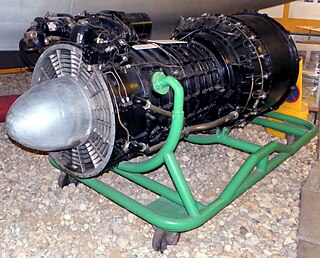
The Metropolitan-Vickers F.2 is an early turbojet engine and the first British design to be based on an axial-flow compressor. It was an extremely advanced design for the era, using a nine-stage axial compressor, annular combustor, and a two-stage turbine.

The Wright J65 was an axial-flow turbojet engine produced by Curtiss-Wright under license from Armstrong Siddeley. A development of the Sapphire, the J65 powered a number of US designs.

The Armstrong Siddeley Viper is a British turbojet engine developed and produced by Armstrong Siddeley and then by its successor companies Bristol Siddeley and Rolls-Royce Limited. It entered service in 1953 and remained in use with the Royal Air Force, powering its Dominie T1 navigation training aircraft until January 2011.

The Armstrong Siddeley ASX was an early axial flow jet engine built by Armstrong Siddeley that first ran in April 1943. Only a single prototype was constructed, and it was never put into production. A turboprop version as the ASP was somewhat more successful, and as the Armstrong Siddeley Python saw use in the Westland Wyvern.

The Bristol Siddeley Orpheus is a single-spool turbojet developed by Bristol Siddeley for various light fighter/trainer applications such as the Folland Gnat and the Fiat G.91. Later, the Orpheus formed the core of the first Bristol Pegasus vectored thrust turbofan used in the Harrier family.
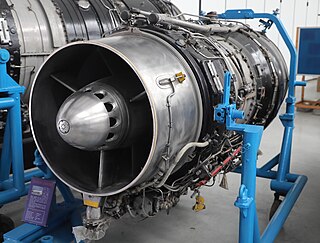
The de Havilland Gyron Junior is a military turbojet engine design of the 1950s developed by the de Havilland Engine Company and later produced by Bristol Siddeley. The Gyron Junior was a scaled-down derivative of the de Havilland Gyron.

The EFW N-20 Aiguillon was Switzerland's first indigenous jet fighter project. The Swiss Federal Aircraft Factory developed a design for a four-engined swept winged fighter following the end of the Second World War. An unpowered sub-scale N-20.01 glider and a turbojet powered test aircraft, also sub-scale and known as the N-20.02 Arbalète ("Crossbow"), were test flown. A fighter prototype N-20.10 Aiguillon was built but never flown, and a twin-engines N.20.20 Harpon was also proposed but not followed up.

The Rolls-Royce/Snecma Olympus 593 was an Anglo-French turbojet with reheat (afterburners), which powered the supersonic airliner Concorde. It was initially a joint project between Bristol Siddeley Engines Limited (BSEL) and Snecma, derived from the Bristol Siddeley Olympus 22R engine. Rolls-Royce Limited acquired BSEL in 1966 during development of the engine, making BSEL the Bristol Engine Division of Rolls-Royce.

The General Electric J73 turbojet was developed by General Electric from the earlier J47 engine. Its original USAF designation was J47-21, but with innovative features including variable inlet guide vanes, double-shell combustor case, and 50% greater airflow was redesignated J73. Its only operational use was in the North American F-86H.
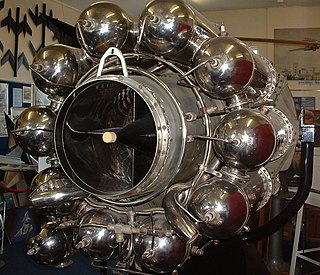
The Power Jets W.2 was a British turbojet engine designed by Frank Whittle and Power Jets Ltd. Like the earlier Power Jets W.1, the reverse-flow combustion configuration included a double-sided centrifugal compressor, 10 combustion chambers and an axial-flow turbine with air-cooled disc. It entered production as the Rolls-Royce Welland and was the first UK jet engine to power operational aircraft, the Gloster Meteor.

The Rolls-Royce Olympus turbojet engine was developed extensively throughout its production run, the many variants can be described as belonging to four main groups.
